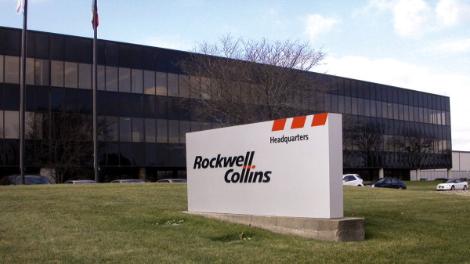
Rockwell Collins headquarters. (Rockwell Collins)
United Technologies Corporation (UTC) CEO Greg Hayes admits that his company’s $30 billion acquisition of Rockwell Collins is taking longer than expected, but the company should officially finish the acquisition process by the end of this month.
Hayes said during the Morgan Stanley Laguna Conference last week that he expected the acquisition to have been completed by now.
“If you would’ve asked me three months ago, I would’ve said almost any day,” he said. “The fact is it has taken us a little bit longer. We still expect to close before the end of this month.”
The chief executive feels the two companies have addressed “all of the questions from the regulatory agencies.” He also explained that one of the reasons it’s taken longer than expected results from difficulty in finding a buyer for one of the businesses operated by Rockwell Collins. That has been resolved, though, after French aerospace and defense manufacturer Safran signed an agreement to acquire the flight controls and electric actuators product line Rockwell Collins previously owned.
Safran’s acquisition is subject to regulatory approval, although according to a statement released in Safran’s earnings results from the first half of 2018, the company expects to close that acquisition within the first six months of 2019.
Under UTC’s acquisition, Rockwell Collins will become a combined business unit with UTC Aerospace Systems (UTAS) called “Collins Aerospace Systems.” Rockwell Collins CEO Kelly Ortberg will lead the combined Collins Aerospace business and UTAS President Dave Gitlin will become its COO.
The combination of the aerospace systems division of UTC and the Rockwell Collins’ avionics manufacturing, defense business and interiors unit — the latter from Rockwell Collins’ 2016 acquisition of B/E Aerospace — provides opportunities for many synergies, especially in terms of new aircraft technologies and concepts that the two companies can explore.
As an example, Rockwell Collins supplies the cockpit displays on the Boeing 737 MAX, 777X and 787. The company is also well known for continually expanding the capabilities of its Pro Line Fusion avionics flight deck.
UTAS is well known for providing aircraft interface device (AID) technology and has continually expanded and improved upon its aircraft health monitoring offerings in recent years. Both companies have also provided other avionics offerings outside of AIDs and displays such as aircraft connectivity and radar systems.
Emirates, for example, is in the process of upgrading its 777 fleet with virtual quick-access recorder technology from UTAS. Meanwhile, Rockwell Collins just announced a new contract from the U.S. Air Force to provide its fleet of KC-135s with a real-time information in the cockpit system.
Hayes told the Morgan Stanley audience he believes the acquisition of Rockwell Collins “looks a heck of a lot better than it did 12 months ago” and that the company has already identified at least $500 million in cost synergies. The only short-term concern expressed by Hayes about the acquisition is the performance of the B/E interiors unit.
“If you think specifically about the Collins business, they would tell you the base avionics business, the defense business, has done better than what we have forecast a year ago, where we have seen some concern is in the interiors business. This is the legacy B/E business. They’re a little bit, not surprisingly, behind plan,” said Hayes.